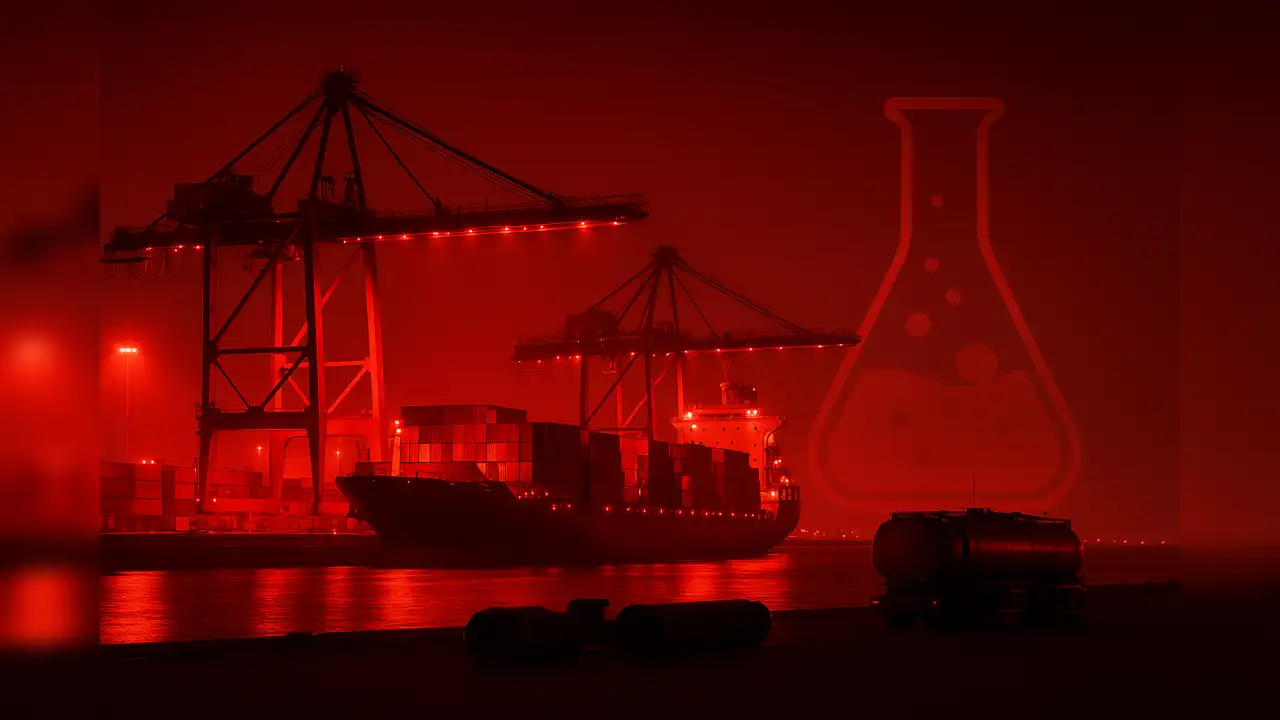Copyright timesnownews

Gwadar, a deep-sea port, a free zone, and a flagship of the China–Pakistan Economic Corridor (CPEC), was sold to the world as a symbol of growth. In reality, the same structures that promise trade and investment also create ideal cover for something darker, the movement of chemicals that can feed a regional methamphetamine industry. Special tax breaks, opaque free-zone rules, Chinese-run terminals, and weak oversight have combined to build an infrastructure where precursor chemicals can slip in under the label of “legitimate cargo,” with almost no public scrutiny. Gwadar’s free zone is run under long tax holidays and customs exemptions. Chinese state-linked operators control key logistics and enjoy wide discretion over warehousing and the movement of goods. The risk begins with how precursors travel. Meth is not grown; it is made. Its ingredients are legal in many forms—industrial solvents, pharmaceutical intermediates, specialty chemicals. In a tightly governed system, each such shipment is traceable--who imported it, for what use, where it was stored and how much was consumed. In Gwadar’s model, much of that visibility is softened. Free-zone firms can import duty-free, store in bonded warehouses, re-export or move consignments inland with limited public reporting. When Chinese-linked logistics, forwarding, and “trading” companies operate behind layered ownership structures, it becomes harder to know whether a container of “industrial chemicals” is feeding factories—or clandestine labs tied to the Makran coast pipeline already identified as a major route for heroin and meth to the Gulf and East Africa. Open sources already show the pattern on the demand side-- repeated seizures of high-purity “crystal” traced back to Pakistan’s coast, often on stateless dhows, often along the same maritime corridors. Regional officials and analysts have flagged a shift from heroin to synthetic drugs sourced from labs in Pakistan. What is missing is any matching transparency at the front end of that chain. Which free-zone entities are importing sensitive precursors? In what volumes? For which declared industrial uses? Are those uses even physically present in Gwadar? If the paper trail shows significant inflows of relevant chemical classes without corresponding legitimate capacity, that gap itself becomes evidence of diversion risk. This is not simply a story about smugglers exploiting “ungoverned spaces.” It is about how a state-backed, foreign-operated infrastructure design can normalise opacity. Gwadar’s special economic regime reduces taxes, cuts paperwork, and concentrates control in a tight circle of port authorities, security agencies and a Chinese operator whose incentives are throughput and deniability, not narcotics policing. The combination of national security shielding, limited local accountability, and restricted media access means questions about cargo profiles, warehouse audits and end-use checks rarely surface in public. In that environment, the line between licit and illicit flows is not a bright rule. It is a managed choice. A serious investigation would not start with secret intelligence. It would start with records that already exist on paper. Company registries can identify free-zone entities with vague or catch-all business scopes. Trade data and HS codes can highlight abnormal imports of pseudoephedrine-type precursors, solvent systems, and reagents that match known meth recipes. Customs and port filings can be checked to see whether declared end-users or factories are real, operating, and appropriately scaled. Shipping records can be mapped against known seizure dates and routes at sea to see whether precursor spikes precede meth hauls along the Makran–Gulf track. Even partial matches would raise hard questions about who benefits from looking away. The value of framing Gwadar this way is clarity. It moves the conversation beyond slogans about 'development' or vague accusations about cartels. It shows how the architecture of CPEC—tax-free enclaves, privileged operators, political protection, and weak transparency—can be repurposed as a meth supply machine without a single public policy speech changing tone. It undercuts the claim that Pakistan and its partners are mere victims of trafficking or only suffer from porous borders. If precursor inflows, warehouse regimes, and corporate shells converge with the geography of known meth exports, then narcotics production is not an accidental by-product. It is wired into the same strategic infrastructure that Beijing and Islamabad celebrate. And that makes Gwadar not just a port, but a test of whether state-backed projects can be held to the most basic standard--that they do not quietly fuel the very criminal economies they claim to fight.



